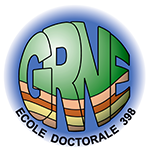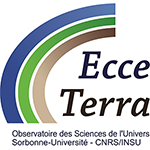Webinaire ISTeP - Vincent Roche

(post-doctorant à l'ISTeP)
The Mozambique margins: a key point to understand the East Gondwana breakup
The break-up of the Gondwana supercontinent lead to the formation of the Mozambique passive margins, as Africa and Antarctica separated during the mid-Jurassic period at around 160 Ma (Senkans et al., 2019). Albeit plate kinematics during the oceanic spreading stage are relatively well constrained (e.g. Nguyen et al., 2016; Davis et al., 2016; Klimke et al., 2018; Mueller and Jokat, 2019), the initial fit of Africa and Antarctica (Eagles and König, 2008; Leinweber and Jokat, 2012; Gaina et al., 2013, Thompson et al., 2019), their earliest relative movements and the architecture of distinct margin segments from Mozambique to South Africa in relation to those from Antarctica remain sparsely known (Klimke et al., 2018). While margins architecture has been recently evidenced along the central Mozambique (i.e. the Angoche and Beira High segments; Senkans et al., 2019; Mueller and Jokat, 2017; 2019), the spatial extent of rifting further east and south remains poorly documented.
Here, we use mainly high-resolution seismic data sets and oil company wells to propose an history of the deformation and evolution of the oblique margins system from the Davie ridge area to Agulhas Fracture zone for the northern margins (i.e. the Mozambique margins), and from the Gunnerus Ridge to the Astrid Ridge for the southern conjugate margins (i.e. the Antarctic margins).
Findings on the Mozambique margins show the existence of a magma-rich segments with large volume of seaward dipping reflectors (SDRs) that may be involved during the transform activity. Three main set of faults may be identified at the regional scale: (i) the NW-SE transfer faults accommodate the regional pattern of deformation during Early Jurassic (ii), the N-S trending set of faults controls the location of volcanic basins and the drift of Antarctica (iii) the NE-SW trending set of faults triggers the crustal thinning and then the onset of oceanic spreading. Such particular architecture and abundance of magmatism may be related to inherited structures (e.g. crustal and lithospheric) that favored extension and upwelling from a deep thermomechanical anomaly, called Karoo superplume at ca 180 Ma (White and McKenzie, 1989). Interestingly, the discovery of a new ocean in the southern Mozambique – i.e. the Natal ocean – with an onset of spreading at around 160 Ma, bring also new constrains on Gondwana breakup. Similar results are observed in the Antarctic margins. Here, we recognized for instance (i) a thick fan-shaped deposits of volcanics at the Astrid ridge, (ii) the presence of SDRs in the Grunehogna craton area showing clear similitudes with rocks from the South Mozambique Coastal Plain and from the Natal area, respectively.
Based on such correlations, we proposed a simplified conceptual geodynamic model for the whole area, from the initiation of extension to the seafloor spreading. We summarize this evolution in three main steps. Stage T1 represents the first extensional event inducing crustal thinning during the Permo-Trias before the breakup of the Gondwana. It is characterized by an E-W extension trend responsible for the formation of large N-S fault-controlled basins. Stage T2 is marked by the onset of a plume activity at about 180 Ma (e.g. Jourdan et al., 2007). Characterized by large N-S to NE-SW trending basins depending on the area and by SDRs infilling, deformation related to T2 is consistent with a NW-SE trending extension. Finally, Stage T3 corresponds to the continuation of the rift with a stress field rotation ranging from NW-SE to N-S, suggesting that Antarctica moving in a SSE direction with respect to Africa after 156 Ma. This change of kinematics corresponds to the onset of transform activity along the Mozambique Coastal Plain with the Limpopo Transform Fault Zone and along Tanzania and north Mozambique with the Davie Transform Fault Zone.
11/12/2021 à 12h30
Egalement dans la rubrique
- Séminaire ISTeP - Carole Berthod
- Séminaire ISTeP - Razvan Poppa
- Webinaire ISTeP - Yann Klinger
- Webinaire ISTeP - Sylvain Garel
- Webinaire ISTeP - Cécile Arenes
- Webinaire ISTeP - Jorge Jara
- Séminaire ISTeP - Samuel Angiboust
- Séminaire ISTeP - Sarah Incel
- Séminaire ISTeP - Romain Rubi
- Séminaire ISTeP - Jean-Paul Callot
- Séminaire ISTeP - Sabine Den Hartog
- Séminaire ISTeP - Thibault Cavailhes
Chiffres clés
L'ISTeP comprend 108 membres dont :
- 12 professeurs
- 21 maîtres de conférences
- 2 directeurs de recherche CNRS
- 2 chargés de recherche CNRS
- 7 ATER et post-docs
- 26 doctorants
- 21 ITA-IATSS
- 17 collaborateurs bénévoles / émérites





